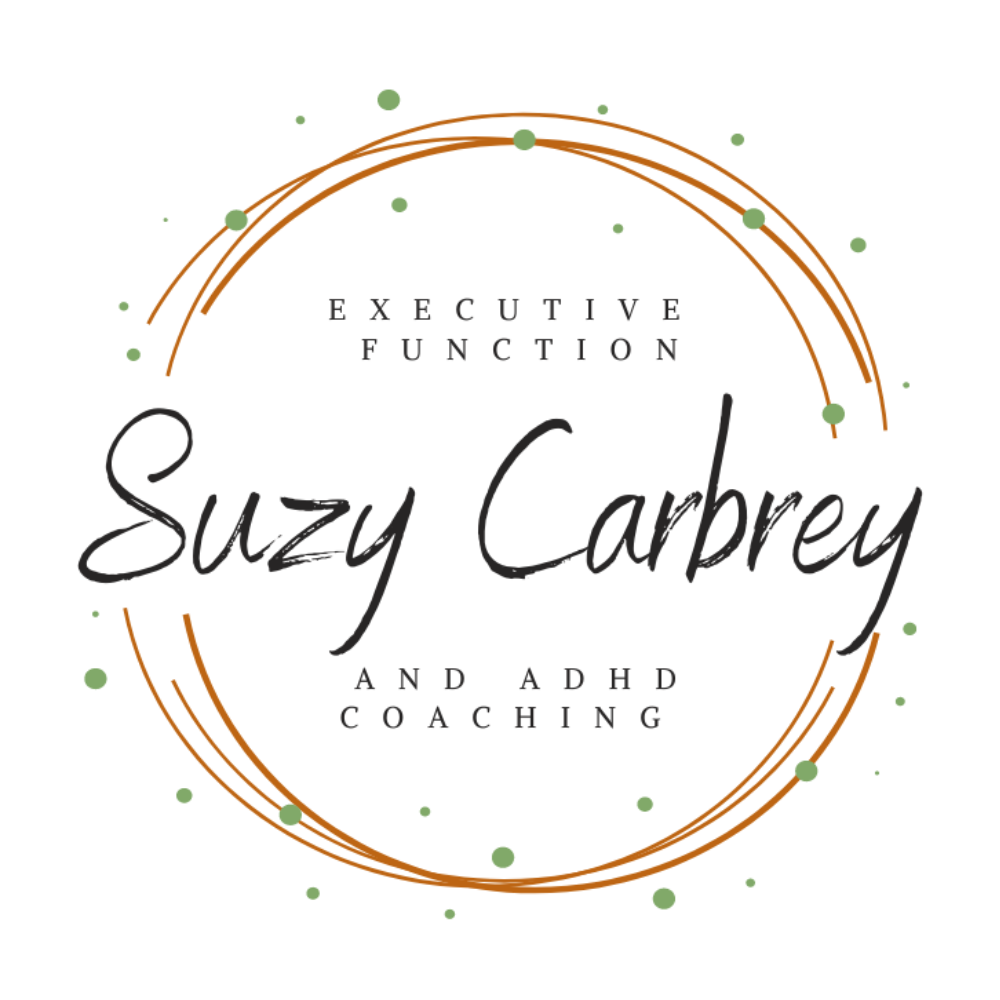Time management is a skill we often hear about but rarely feel we’ve mastered—especially for those with executive functioning challenges, including ADHD. Tasks stretch endlessly, procrastination looms, and time feels more like an abstract concept than a tool we can wield effectively. For parents and professionals juggling responsibilities, this struggle can feel insurmountable.
The good news? Time management isn’t about being perfect; it’s about adopting strategies that work with your brain rather than against it. The key to this approach is making time visual and embracing tools like analog clocks to gain a clearer perspective on the hours of your day.
Here, we’ll explore why time feels elusive for some, highlight practical strategies, and explain how visualizing time can transform your daily rhythm.
Why Time Feels So Difficult to Manage
For many individuals with executive functioning challenges, time doesn’t feel linear or predictable. Instead, it’s either “now” or “not now.” Immediate tasks or distractions capture your attention, while future obligations fade into the background until they demand urgent action. This tendency, often called “time blindness,” can make deadlines, appointments, and long-term goals seem distant and unimportant—until they’re too close for comfort.
Key Challenges Include:
- Difficulty Estimating Time: How long will that email take to write? Without a clear sense of time, tasks expand or compress unpredictably.
- Procrastination: Tasks requiring future effort often lack urgency, making them easy to postpone.
- Overcommitting: Without a clear sense of available time, it’s easy to say “yes” to too much.
- Trouble Transitioning: Moving from one task to another feels jarring, especially when you’re deeply focused.

Strategies for Better Time Management
To manage time effectively, you need tools that anchor your perception of time to the real world. These strategies can help:
1. Make Time Visual
Time becomes tangible when you can see it. Analog clocks, for example, provide a clear representation of the passage of time, showing how much is left before the next hour or deadline. Unlike digital clocks, which only display a number, analog clocks give a spatial view of time, helping you connect the “now” to the “soon.”

Tips for Visualizing Time:
- Place analog clocks in key areas of your home and workspace, like the kitchen, bedroom, and office.
- Use tools like Time Timers (visual timers that show countdowns with disappearing colors) for tasks or transitions.
- Post visual cues, such as sticky notes with deadlines or reminders, near clocks to reinforce their importance.
2. Externalize Your Schedule
Internalizing tasks—relying on memory alone—often leads to missed steps. Externalizing your schedule by writing it down or using digital tools makes your plans visible and easier to follow.
Practical Approaches:
- Use a daily planner or calendar to block out time for tasks, including breaks and transitions.
- Color-code activities (e.g., blue for work, yellow for family) to differentiate priorities at a glance.
- Set reminders for crucial tasks or transitions, but avoid overwhelming yourself with too many alerts.
3. Break Tasks into Manageable Chunks
Large projects can feel overwhelming, leading to avoidance. Breaking them into smaller steps not only reduces stress but also makes it easier to estimate and manage time.
How to Chunk Tasks:
-
Divide projects into steps that take no more than 20–30 minutes. For example, instead of “Clean the house,” break it down into “Tidy the living room,” “Vacuum the hallway,” and “Wipe down the kitchen counters.”
-
Assign each step a specific time slot in your schedule. This helps ensure the task gets done without overloading your day.
-
Celebrate completing each chunk to build momentum and motivation. A quick reward, like a break or a small treat, can keep you moving forward.

Helpful Tool: Magic ToDo
If you’re unsure how to break down tasks, Magic ToDo from Goblin.Tools is a simple yet powerful resource. You can enter any task, and it will suggest smaller, actionable steps for you. This is especially useful for neurodivergent thinkers or anyone who struggles to see the steps in large projects
4. Practice Time Estimation
Improving your sense of time is like strengthening a muscle—it takes practice.
Time-Estimation Exercises:
- Predict how long a task will take, then time yourself while completing it. Compare your estimate with the actual time and adjust your expectations accordingly.
- Use familiar benchmarks to estimate time. For instance, washing dishes might take the same amount of time as listening to two songs (about 6 minutes).
5. Develop Routines
Regular routines simplify time management by removing guesswork and creating consistency. When you follow a predictable pattern, tasks fit naturally into your day.
Routine Ideas:
- Start your day with a planning session to set priorities and block time for key tasks.
- End your day with a review of completed tasks and preparation for tomorrow.
- Establish set times for meals, exercise, and sleep to maintain energy and focus.
Using Analog Clocks to Enhance Time Awareness
Analog clocks are particularly effective tools for visualizing and managing time. Here’s why:
- They Show Time Passing: The movement of the hands creates a physical sense of time moving forward, making it easier to stay on track.
- They Provide Context: You can see how much time has passed and how much remains before your next appointment or deadline.
- They Anchor You in the Present: Glancing at an analog clock regularly builds awareness of time and encourages intentional decision-making.

How to Incorporate Analog Clocks into Your Day:
- Place an analog clock where you can easily see it while working.
- Set visual reminders (e.g., sticky notes) around the clock to prompt you to check the time regularly.
- Use the clock as a reference for breaks, transitions, and deadlines.
The Role of Self-Talk in Time Awareness
Self-talk can be a powerful tool to encourage and coach yourself through time management challenges. Positive, supportive internal dialogue helps you stay motivated, focused, and aware of time passing.
Using Self-Talk to Support Time Awareness:
- Encourage Time Checks: Practice saying, “What time is it? How much time do I have left?” This prompts regular awareness of the clock.
- Coach Yourself Through Tasks: Use affirmations like, “I can get started now. Just 10 minutes of focus, and I’ll reassess.”
- Reframe Negative Thoughts: Replace, “I’ll never finish this,” with, “I’m making progress one step at a time.”
- Celebrate Wins: After completing a task, tell yourself, “Great job—one more step toward my goals.”
Creating Accountability and Motivation
Even with the best tools, motivation and follow-through can be challenging. Accountability can bridge this gap.
Accountability Strategies:
- Partner Up: Share your goals with a colleague, friend, or coach who can check in on your progress.
- Set Intermediate Deadlines: Break large projects into smaller milestones with specific deadlines.
- Reward Yourself: Plan small rewards for completing tasks, such as enjoying a favorite tea or taking a short walk.

Imagining the Future:
Visualizing the benefits of completing a task can also help. Ask yourself:
- How will I feel once this is done?
- What stress or problems can I avoid by finishing early
Overcoming Procrastination with Visual Time Tools
Procrastination often stems from difficulty connecting with future rewards. Visual tools help counter this by making time feel immediate and actionable.
Tips to Combat Procrastination:
- Use countdown timers to create urgency. For example, set a 20-minute timer to work on a task before taking a break.
- Block distractions during work periods using apps like Forest or Focus@Will.
- Schedule tasks at specific times to create a sense of accountability.
The Benefits of Mastering Time Management
When you manage time effectively, you:
- Reduce stress and overwhelm.
- Gain more control over your day.
- Create space for priorities that matter most, like family, self-care, or personal growth.
Time management is less about squeezing more into your day and more about aligning your time with your goals and values.
Conclusion:
For parents and professionals with executive functioning challenges, time management is not a one-size-fits-all solution—it’s a personal journey of discovery. By adopting strategies that work with your brain, such as visualizing time, externalizing your schedule, and using tools like analog clocks, you can turn time from an abstract concept into a practical resource. Simple actions—like breaking tasks into chunks or regularly checking a clock—can create meaningful shifts in how you navigate your day.

Remember, time management isn’t about perfection; it’s about progress. Start with one strategy, practice it consistently, and let it lead you toward a more intentional, balanced, and productive life. Celebrate small wins, trust the process, and know that every step brings you closer to mastering your time and focusing on what matters most.
Learn more with Online Coaching for Executive Functioning / ADHD
Ready to gain control and enhance your executive functioning? As an experienced and compassionate coach, I specialize in providing support for executive functioning and ADHD. To embark on your journey, please reach out to me at 708-264-2899 or email hello@suzycarbrey.com to schedule a FREE 20-minute discovery call consultation.
With a background as a speech-language pathologist, I have a strong foundation in executive functioning coaching. My graduate degree program in SLP placed a significant emphasis on cognition, including executive functions, and I have years of experience in medical rehabilitation, providing cognitive-communication therapy. Additionally, I have completed an ADHD Services Provider certification program, I am Solutions-Focused Brief Therapy Diamond Level 1 certified and I am trained in the Seeing My Time® executive functioning curriculum.
Experience the convenience and effectiveness of online coaching, backed by studies that demonstrate equal results to in-person services. Parents, professionals, and emerging adults love the convenience and privacy of receiving coaching from their own homes.
Whether you reside in Chicago, Milwaukee, Indianapolis, Kansas City, or anywhere else around the globe, I am here to assist you. Schedule your discovery call consultation today, and I eagerly anticipate the opportunity to work with you!
Please note that although I am a certified speech-language pathologist, all services Suzy Carbrey LLC provides are strictly coaching and do not involve clinical evaluation or treatment services. If you require a formal speech therapy evaluation and treatment, please inform me, and I can provide appropriate recommendations.

